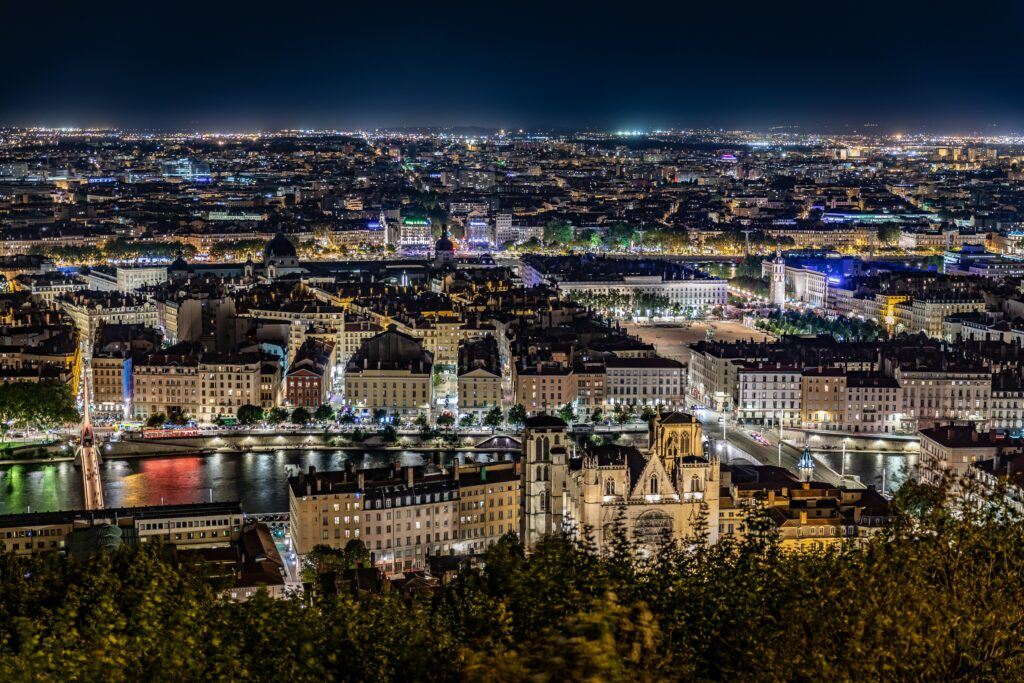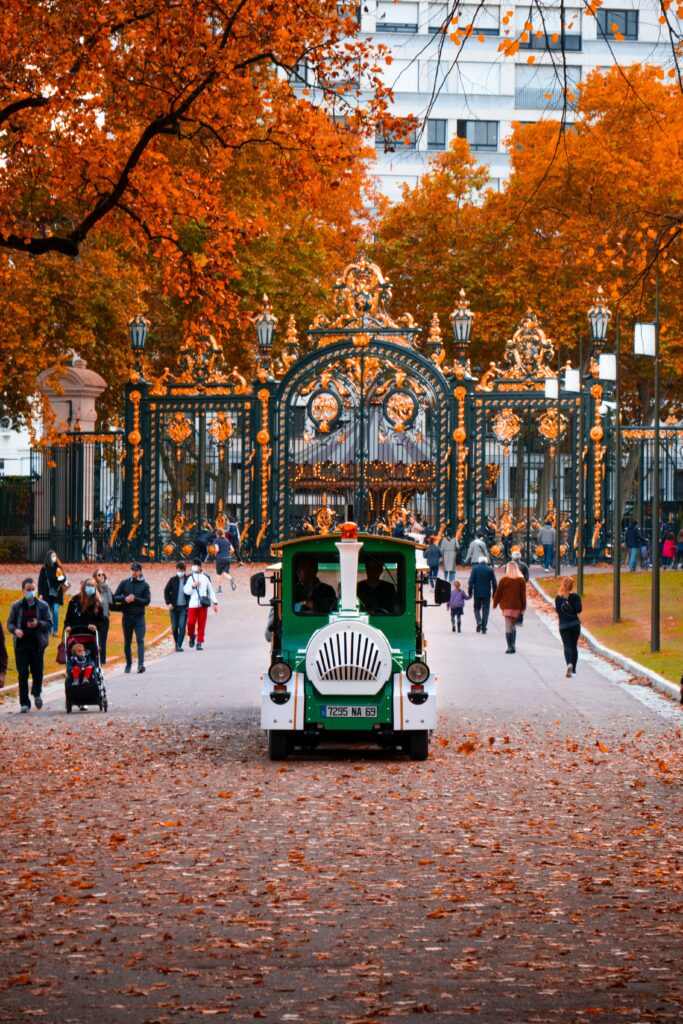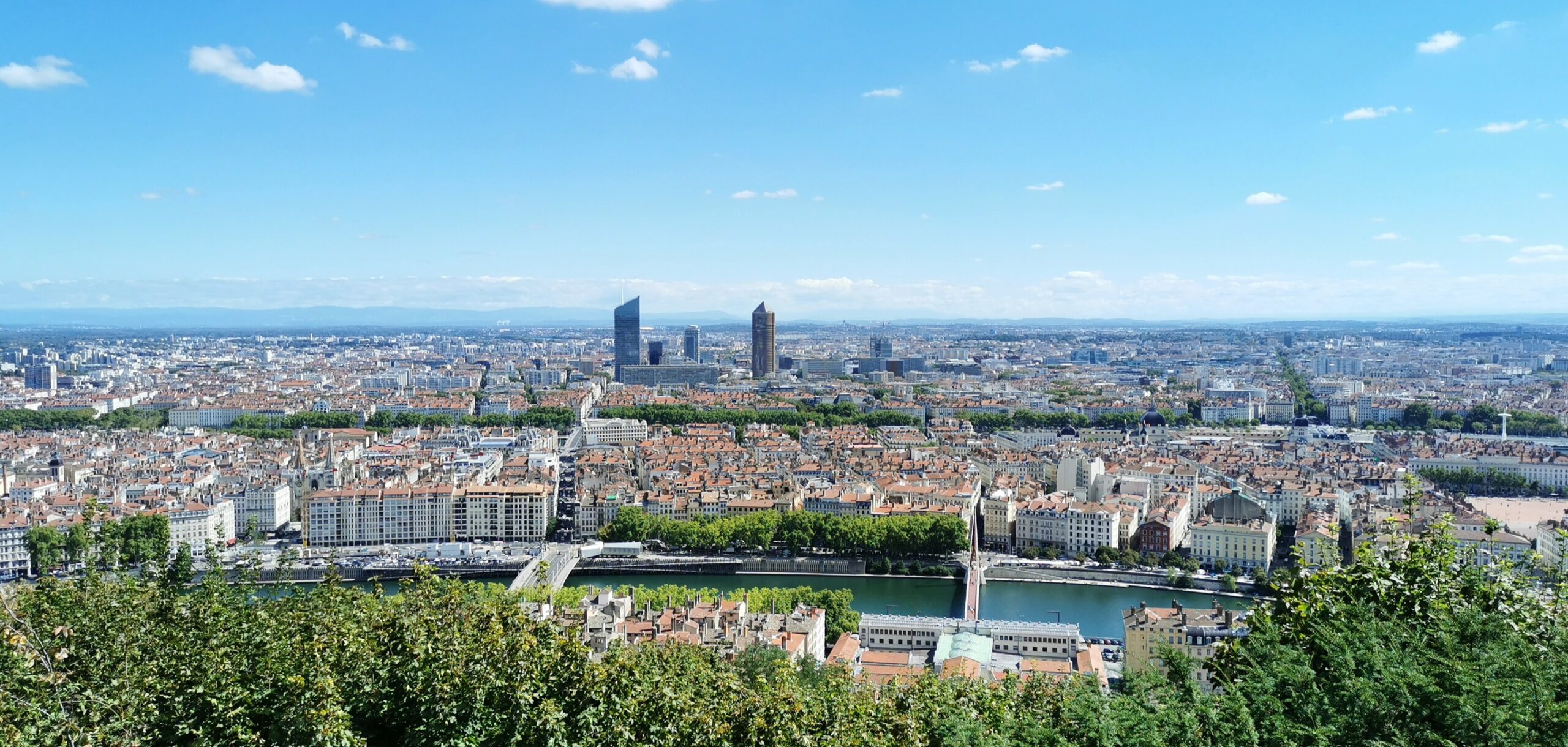Lyon is a French city located in the Rhône-Alpes region, at the junction of the Rhône and Saône rivers. It covers an area of 47.87 km² and has 1.6 million inhabitants. The city has several geographical specificities: located halfway between the sea and the mountains, it is overlooked by two hills and crossed by two rivers, which gives it a particular geography of a peninsula.
Its position on the French map makes it a city of historical exchanges and passages. In fact, it is very close to both Italy and Switzerland. Only 300 kilometers separate Lyon from Turin, and it is only 149 kilometers to Geneva.
Lyon has the privilege of being very close to several exceptional beaches such as Port Galland, located 35 minutes from the city. It is free and very relaxing. There is also the beach of Condrieu les Roches, which is 40 minutes away.
Mobility and transportation
In the city, everything is done to facilitate the movement of the inhabitants from one point to another and even that of people with mobility constraints. The city now has more than 120 bus lines, 4 metro lines, 2 funicular lines, 7 tramway lines, not to mention minibuses equipped to transport people with reduced mobility.
There are two airports in Lyon, an international airport, Lyon Saint Exupéry, 30 minutes from the center of Lyon (28.7 kilometers), and a second business airport, Lyon-Bron.
To get to Lyon from Paris, it takes 4h30 by car and 2h by train. A direct line exists between Paris and Lyon.
The city of Lyon has a privileged position in France and in Europe. A strategic and historical crossroads, it is 390 km from Vaduz in Liechtenstein, 439 km from Luxembourg and 914 km from Madrid in Spain. For the weekends, it is possible to spend the day on the coast, by going for example to Marseille, which is only 315 kilometers from Lyon.

Climate
The climate of Lyon and the Rhône is semi-continental with alternating influences of Mediterranean, continental and oceanic climates. Spring and autumn are very pleasant.
Guide to the city
According to the 2007 INSEE census, 50% of Lyon’s population is between 15 and 44 years old, making it a very young city. 27% of the inhabitants are from immigrant backgrounds and have been living here for 5 years or less.
The city is economically dynamic; in 2010, 7,000 companies were created. This dynamism contributes to a significant creation of employment, making Lyon a city that stands out with an unemployment rate below the national average.
Culturally, Lyon is a city that honors all the arts thanks to the various events and performances that punctuate the year. There is the Biennale de la Danse, the Fête des Lumières and the Nuits sonores for electronic music lovers.

The city of Lyon
Paul Bocuse, a great chef with three Michelin stars, has made Lyon’s cuisine known throughout France. His cooking institute is now established as a restaurant-school in the heart of the city. Chef Paul Bocuse was the driving force behind the creation of several gourmet restaurants, brasseries and quick service restaurants in the Lyon region and then elsewhere in France. In the 2ᵉ arrondissement of Lyon there are currently 83 establishments listed on the Michelin guide. For the more festive, the 3rd arrondissement is full of trendy nightclubs and dance bars to enjoy the city all night.
The city has also been marked by history, during the Resistance to be exact.
Indeed, Lyon is known for its famous traboules. Secret passages that ensure an undetectable circulation by giving access to the courtyards of buildings. Traboules played a crucial role during the escapes of the Second World War and during the revolt of the canuts. Some of these buildings are now open to the public. There is also a very important museum, the Jean Moulin Museum of the Resistance, as well as the Shoah Memorial, which bear witness to the city’s history.
To get some fresh air and oxygen while staying in the city, several parks exist such as the Parc de la Tête d’Or, the largest and most famous park designed in the English style. In total, there are 5 parks in addition to the banks of the Rhône and the green links for strolling or exercising physical activities of all kinds.
If you are a golf enthusiast or would like to try your hand, there are 8 golf clubs in the region that can accommodate you. Exceptional 18-hole courses and practices are waiting for you to practice and have fun with your family or friends.
Demographically, the city is young and family-friendly. Recomposed families represent 10.7% of households under 26 years old, and 45.1% of households of all age groups in the Lyon metropolitan area. 46.3% of households have one or more children.
What to see in the surroundings of Lyon:
There are various attractions on the outskirts of the city such as: The village of Pérouges, a typical medieval village, 40 minutes away by car. It is classified in the top of the most beautiful villages of France with its paved streets which disorientate the tourists and visitors. Parades and shows are organized during the lively month of June.
For thrill seekers, Walibi Park is the ideal weekend destination. Both an amusement park and a water park, Walibi offers an unforgettable, thrill-filled experience with attractions for all ages. It’s less than an hour’s drive from downtown Lyon and served by shuttle buses for non-motorized guests.
